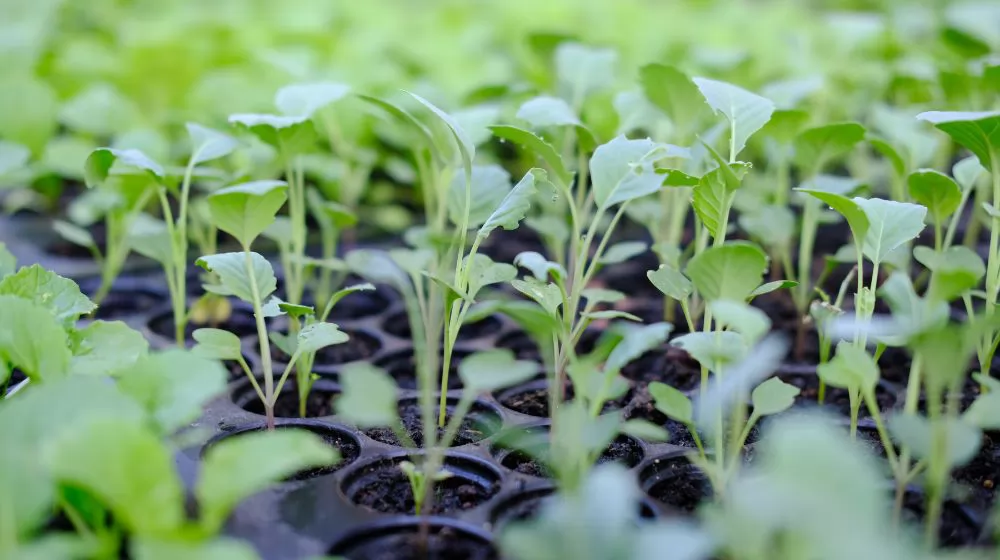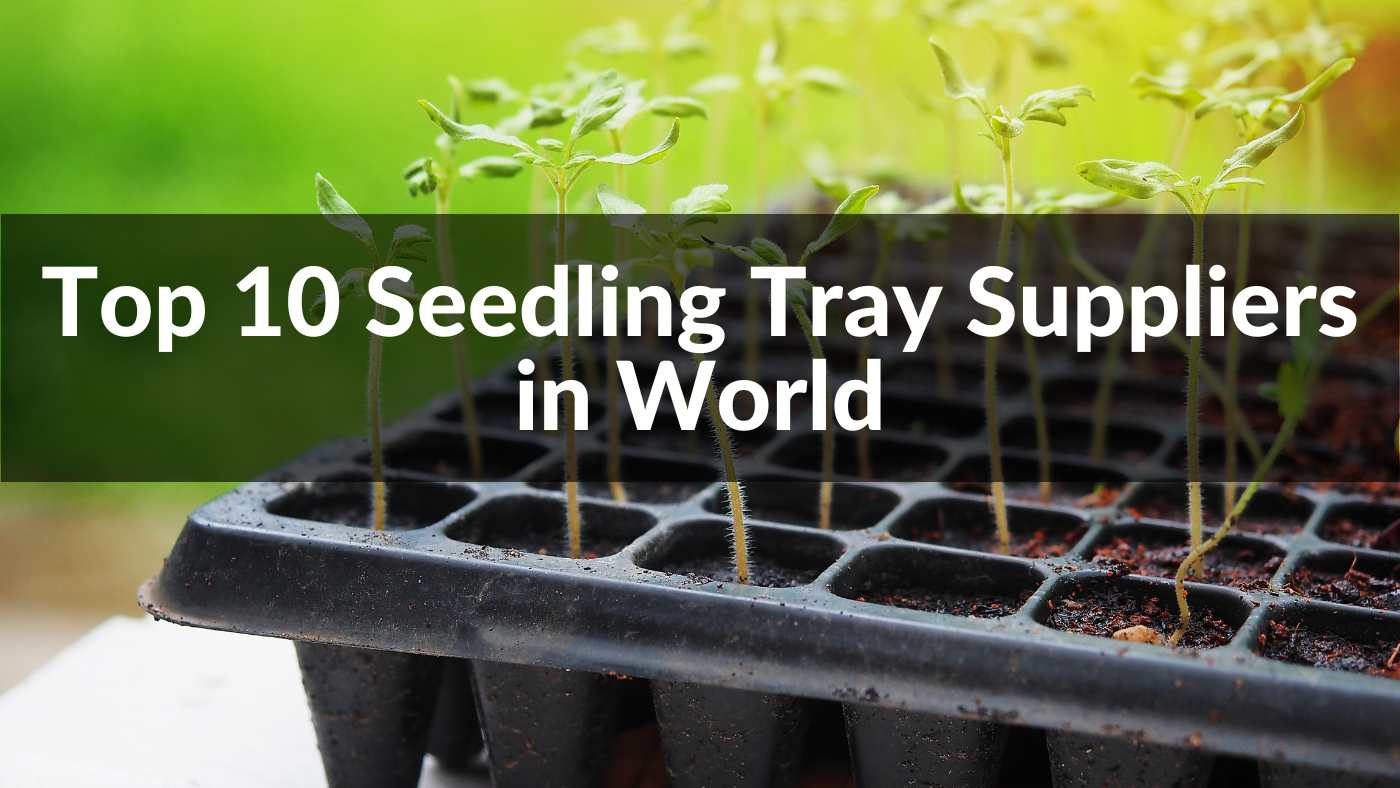
Table of contents:
Caring for your seedling trays is a fundamental aspect of successful gardening, ensuring the health and vitality of your young plants. Proper washing and maintenance not only contribute to the prevention of diseases but also create an optimal environment for robust seedling growth. In this comprehensive guide, we will explore effective techniques and essential steps to keep your seedling trays in top condition, fostering a thriving start for your garden.
Ensuring the cleanliness and upkeep of your seedling trays is paramount for successful gardening. Clean trays not only prevent the spread of diseases but also optimize seed germination, enhance nutrient absorption, and improve air circulation. Additionally, regular care increases the longevity of your trays, making them a durable and effective tool for multiple planting seasons.

Seedling damping off, attributed to seedling blight—a soil-borne disease—is a significant threat to the early stages of plant growth. This disease attacks and often proves fatal to vulnerable seedlings. One of the primary causes of damping off is the reuse of contaminated growing flats and trays that have previously hosted seedling blight.
Seedling blight, being a persistent soil-borne pathogen, can endure in the soil and linger in unclean plant flats and trays over successive planting seasons. This resilience poses a continuous risk to emerging seedlings. The longevity of seedling blight in dirty plant flats and trays underscores the importance of regular cleaning and sanitization practices.
The positive aspect is that damping off is highly preventable with proactive measures. By avoiding the reuse of dirty growing flats and trays, especially those previously infected with seedling blight, gardeners can significantly reduce the risk of disease transmission. Implementing proper sanitation protocols, such as cleaning and disinfecting plant flats and trays between uses, becomes a crucial step in breaking the cycle of seedling blight.
It's worth noting that seedling blight's survival in the soil underscores the importance of broader garden hygiene practices. Periodic soil sterilization and careful attention to the cleanliness of gardening tools can further contribute to a healthy growing environment.
In the upcoming sections, we'll delve into specific strategies and practices to effectively prevent seedling damping off and mitigate the impact of seedling blight, ensuring a robust start for your plants.
To safeguard against damping off when initiating indoor seed growth, it is imperative to adopt thorough disinfection practices for all plastic grow trays, seed cells, and seedling tray covers before each reuse. While brand new seed cell flats and trays straight from the box are generally safe, the same cannot be assumed for previously used indoor seed starting equipment. It is crucial to consistently disinfect these items each time they are reused.
The uncomplicated yet essential process of cleaning and sterilizing seed trays serves as a powerful deterrent against seedling blight. This practice not only prevents the transmission of pathogens from contaminated equipment but also proves to be a time-saving and heartache-preventing measure in the long run.
Regular washing and disinfection of seed trays between uses serve a dual purpose, extending beyond damping off prevention. In addition to mitigating the risk of seedling blight, these measures are instrumental in averting the growth of mold on seedlings. Mold can thrive in damp and unclean environments, posing an additional threat to the health of emerging seedlings. By conscientiously adopting cleaning and disinfection routines, gardeners can create a hygienic and optimal setting for seed germination and early plant development.
Maintaining pristine seed starting equipment is essential for successful indoor seed germination. Here's a step-by-step guide on how to effectively clean your seed starting gear:

After you are finished using your propagation trays, it is best practice to wash and disinfect them. We suggest using a mild detergent and hot water to remove any dirt or debris. After thoroughly rinsing your trays, spray them down with a diluted vinegar solution. Mix equal parts vinegar and water in a spray bottle and let the solution sit on the trays for about 10 minutes before thoroughly rinsing. This application will help get pesky hard water spots out of your trays. We recommend following this step with diluted H202 solution (see below for recipe), a 10-minute soak, and a rinse.
Tip: For an extra deep clean spray with H2O2, let sit for 10 minutes, rinse and let air dry. Please do not mix the H202 and the vinegar in the same container as they are unstable as a mix. When applied separately, they are a highly effective disinfectant.
If you frequent microgreens forums, you have probably come across growers mentioning H202. H202, also known as peroxide, found in brown bottles in just about everyone's medicine cabinet, is a great tool to have in your grow room or greenhouse. H202 is an unstable solution, so additives are added to the mixture to increase the shelf-life. The main difference between food grade peroxide and household peroxide is the presence of those chemical additives.
When searching for reliable sources to purchase seed trays, one excellent option is Linkwin, a reputable manufacturer in the horticultural industry. Linkwin specializes in producing high-quality seedling trays and related gardening equipment.
You can explore Linkwin's range of products, including seed trays designed for various types of plants and gardening needs. Their commitment to quality and innovation makes them a trusted choice for gardening enthusiasts.
To explore and purchase seed trays from Linkwin, visit their official website:https://www.agriculturaltool.com/
Choosing a reputable manufacturer like Linkwin ensures that you not only have access to a diverse selection of seed trays but also benefit from the expertise and reliability of a trusted name in the gardening industry. Visit Linkwin today to discover the perfect seed trays for your gardening endeavors.

Careful care of your seedling trays is an investment in your plants' future. By adhering to the practices outlined in this guide, you'll not only extend the life of your gardening equipment, but you'll also lay the foundation for a bountiful harvest and lush greenery. Remember, a little effort in maintaining your seedling trays goes a long way to ensuring the success of your gardening endeavors. If you need seed trays, please contact Linkwin!











We use cookies to make the website work, to provide advanced features, social media and traffic analysis, and we use analytics and third-party advertising cookies. If you choose to click "Deny All", you will retain the default setting of not allowing the use of cookies or other tracking tools other than technical tools.

